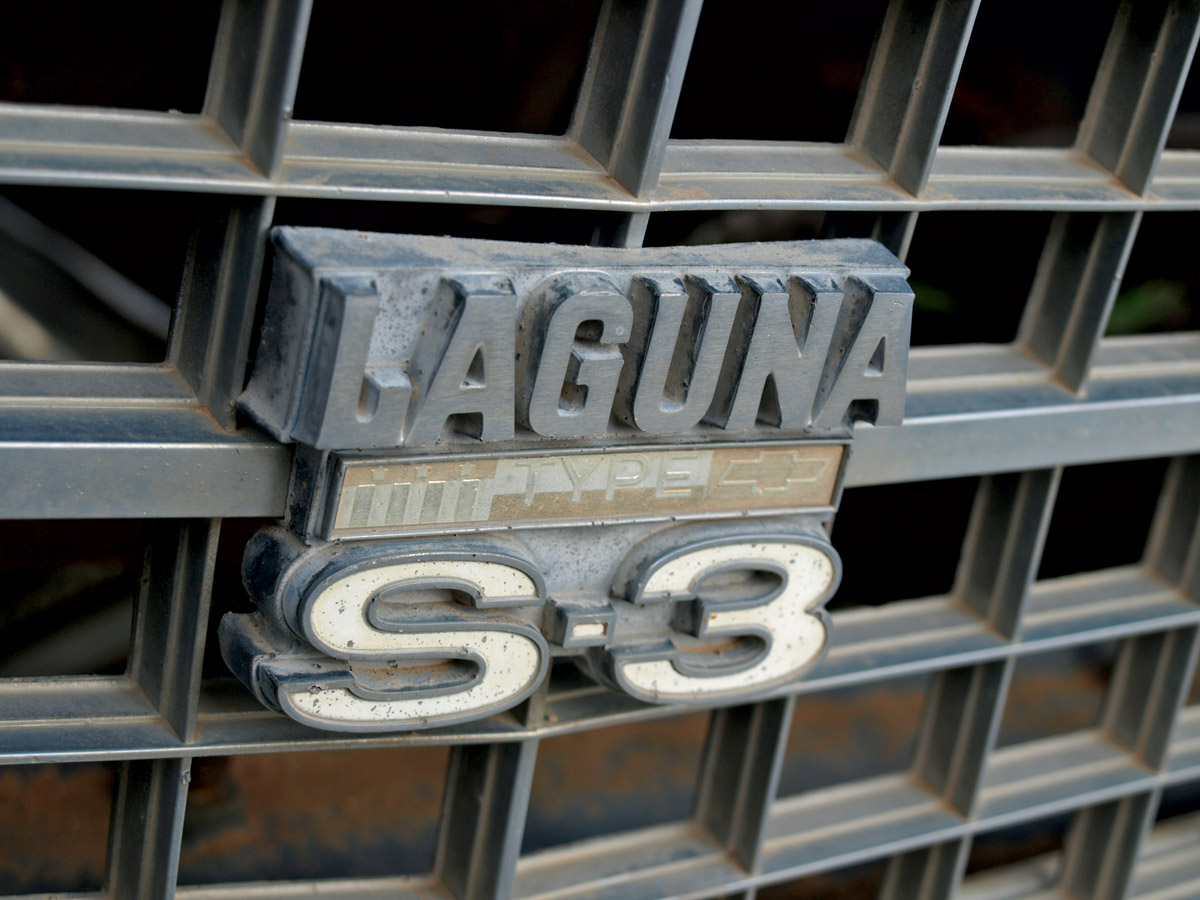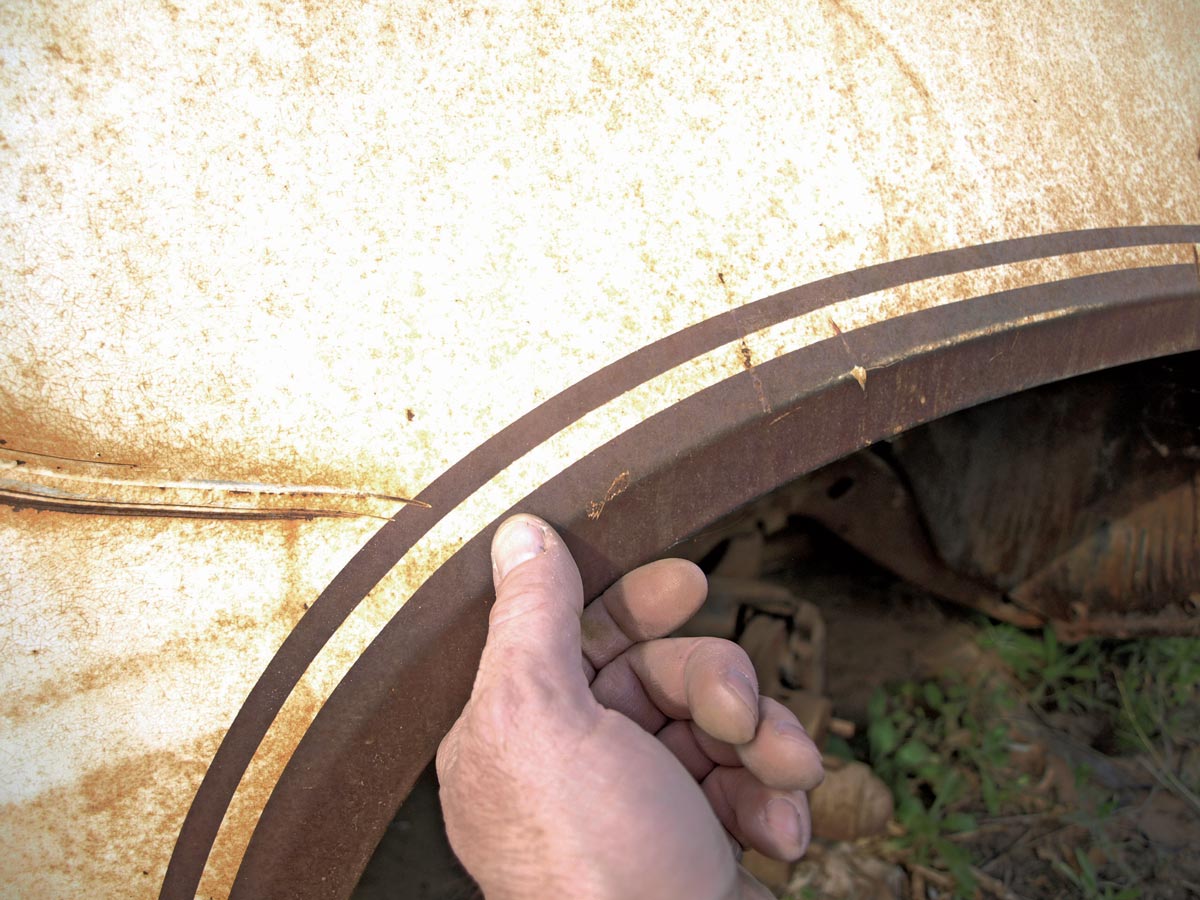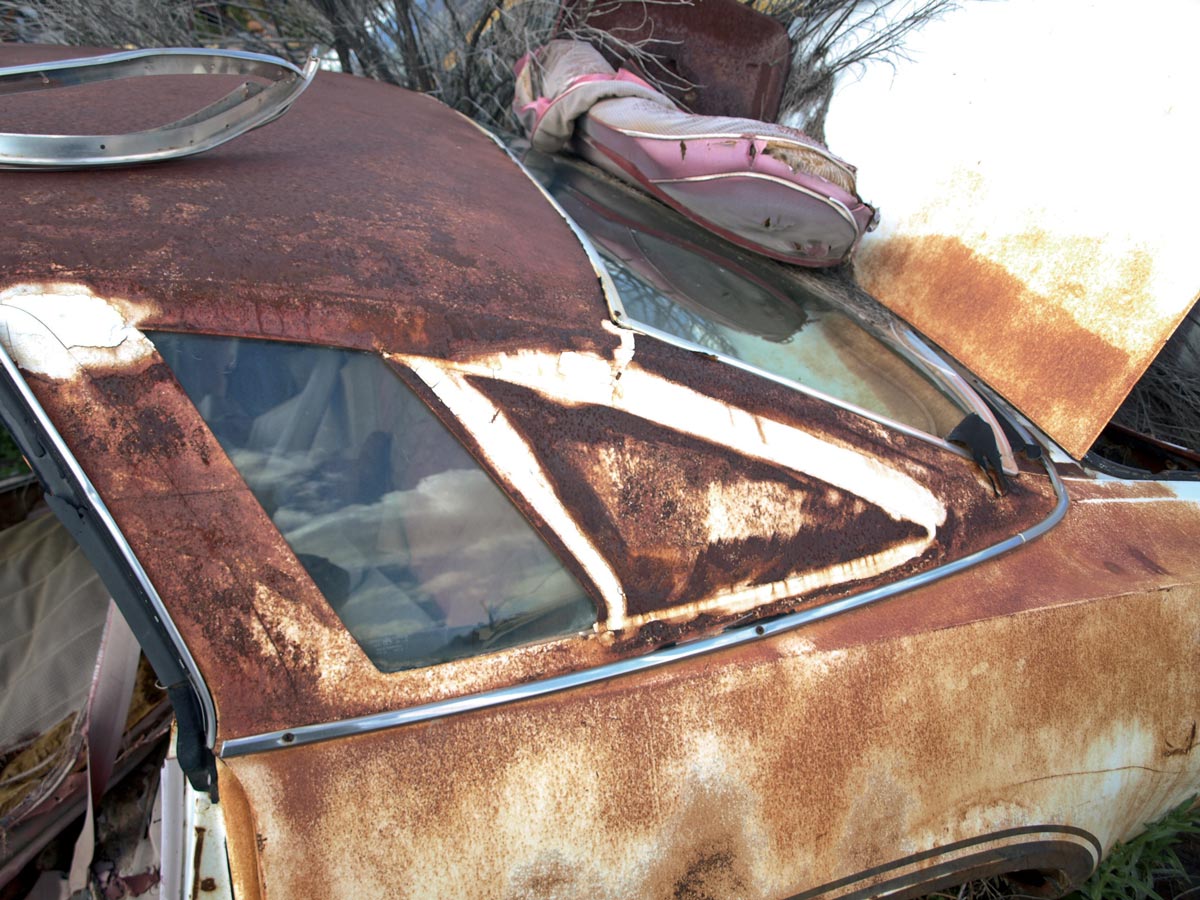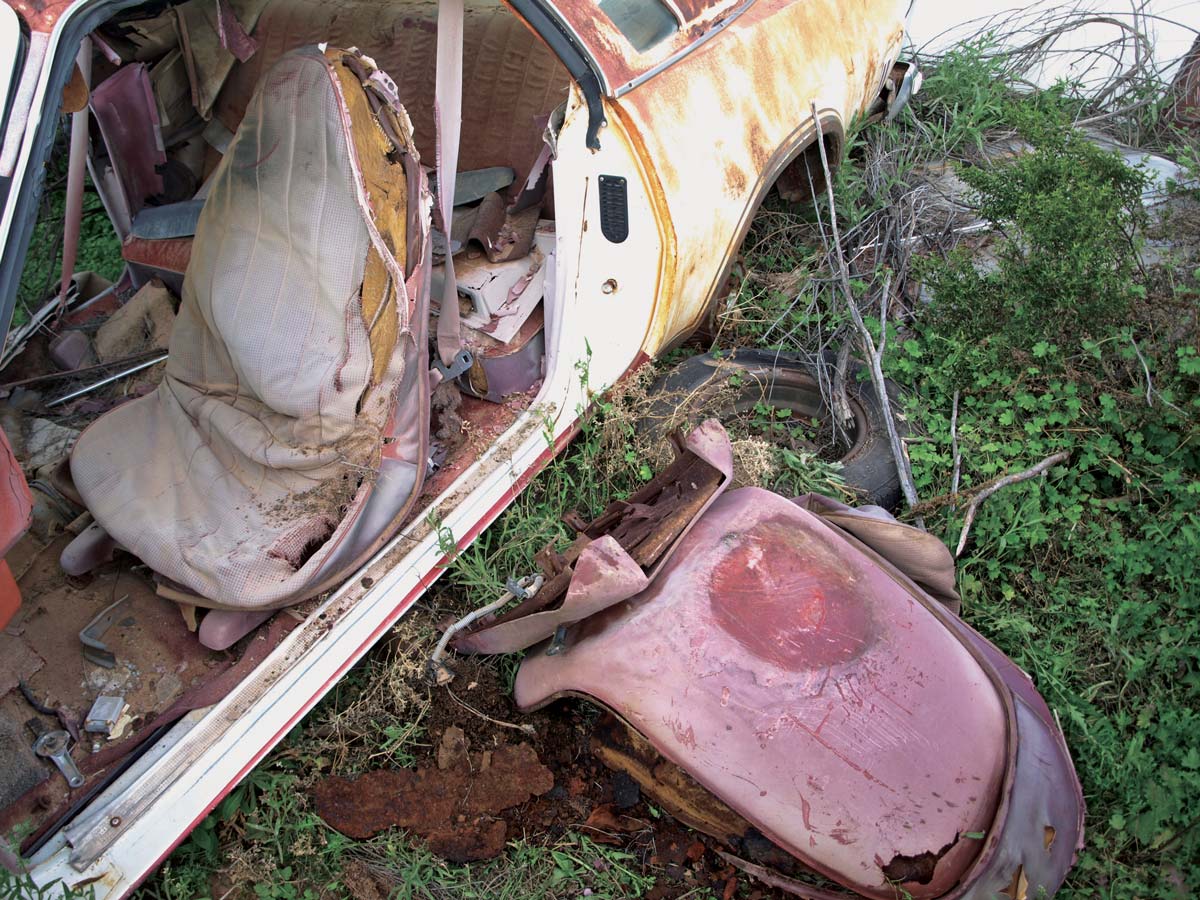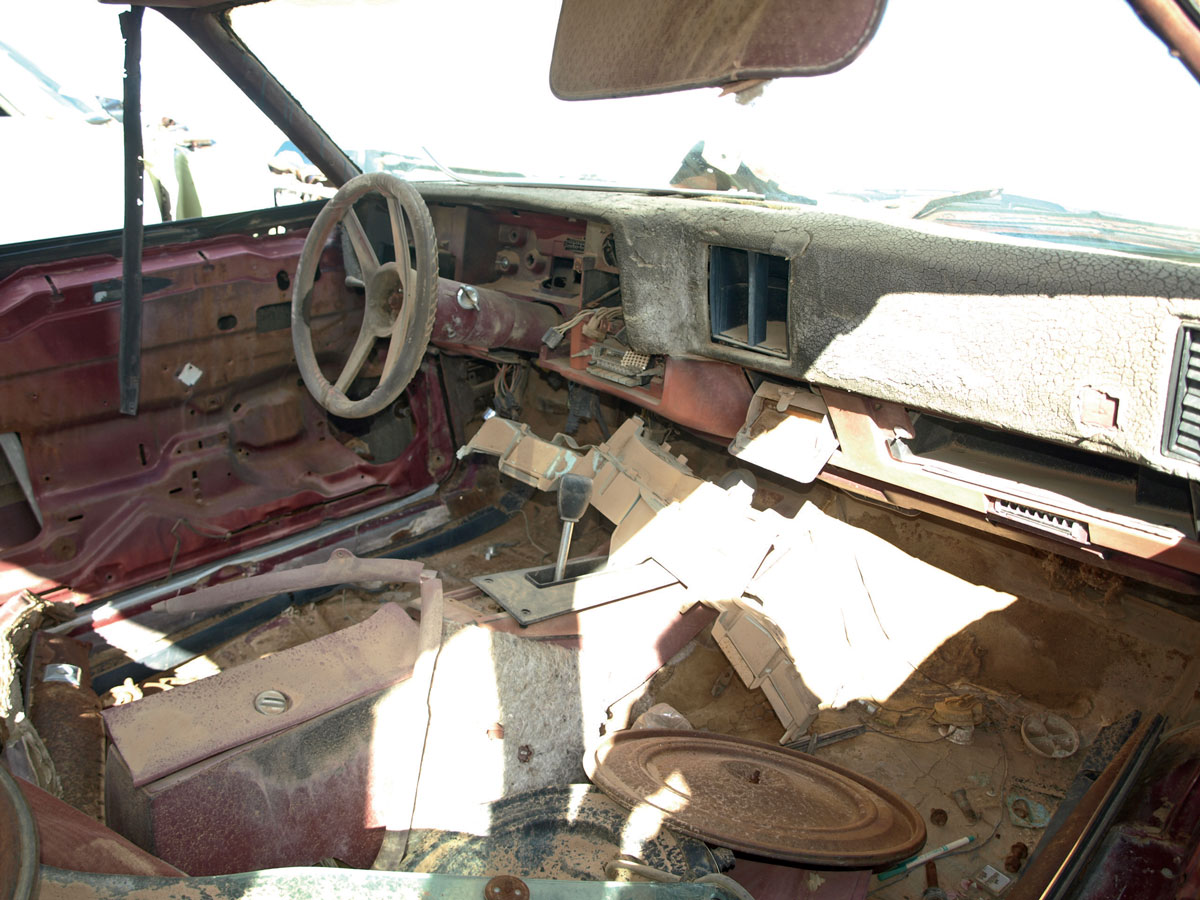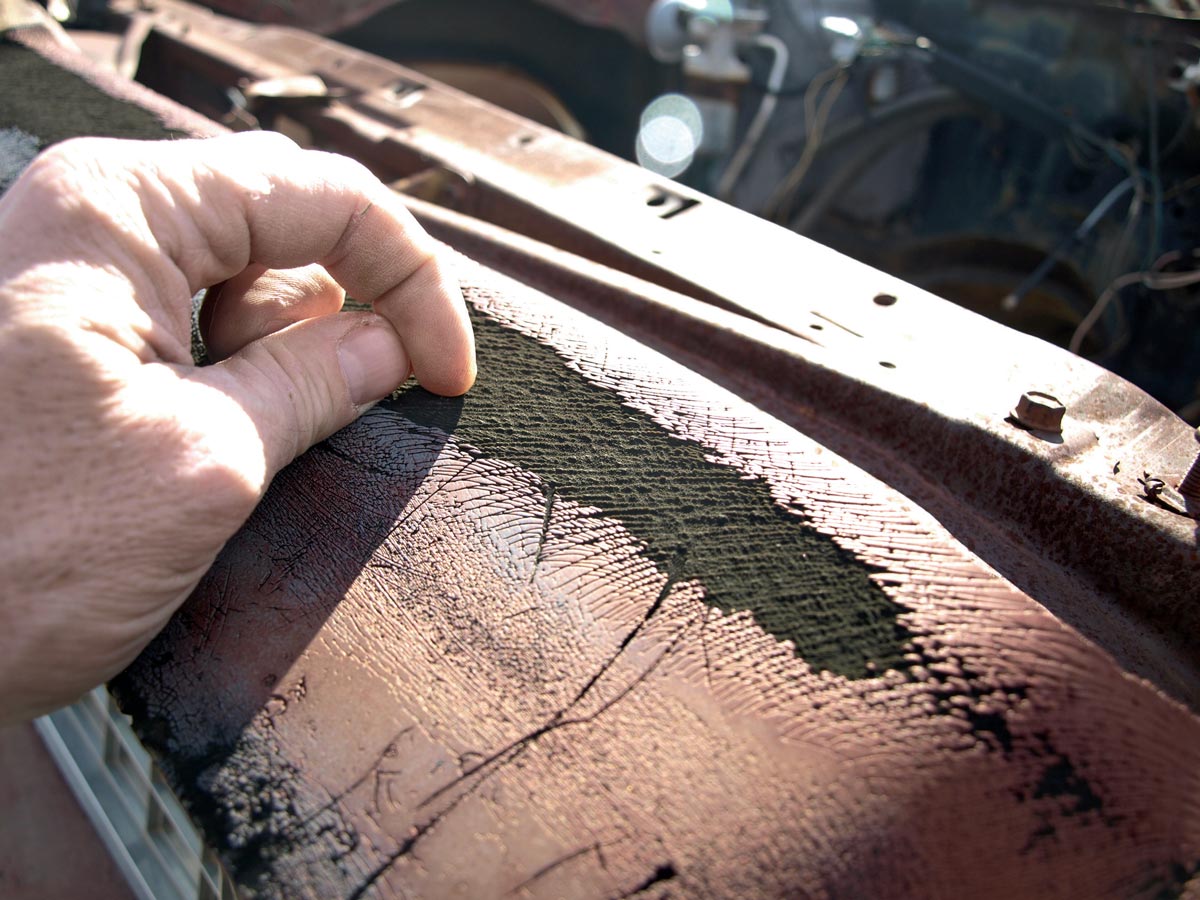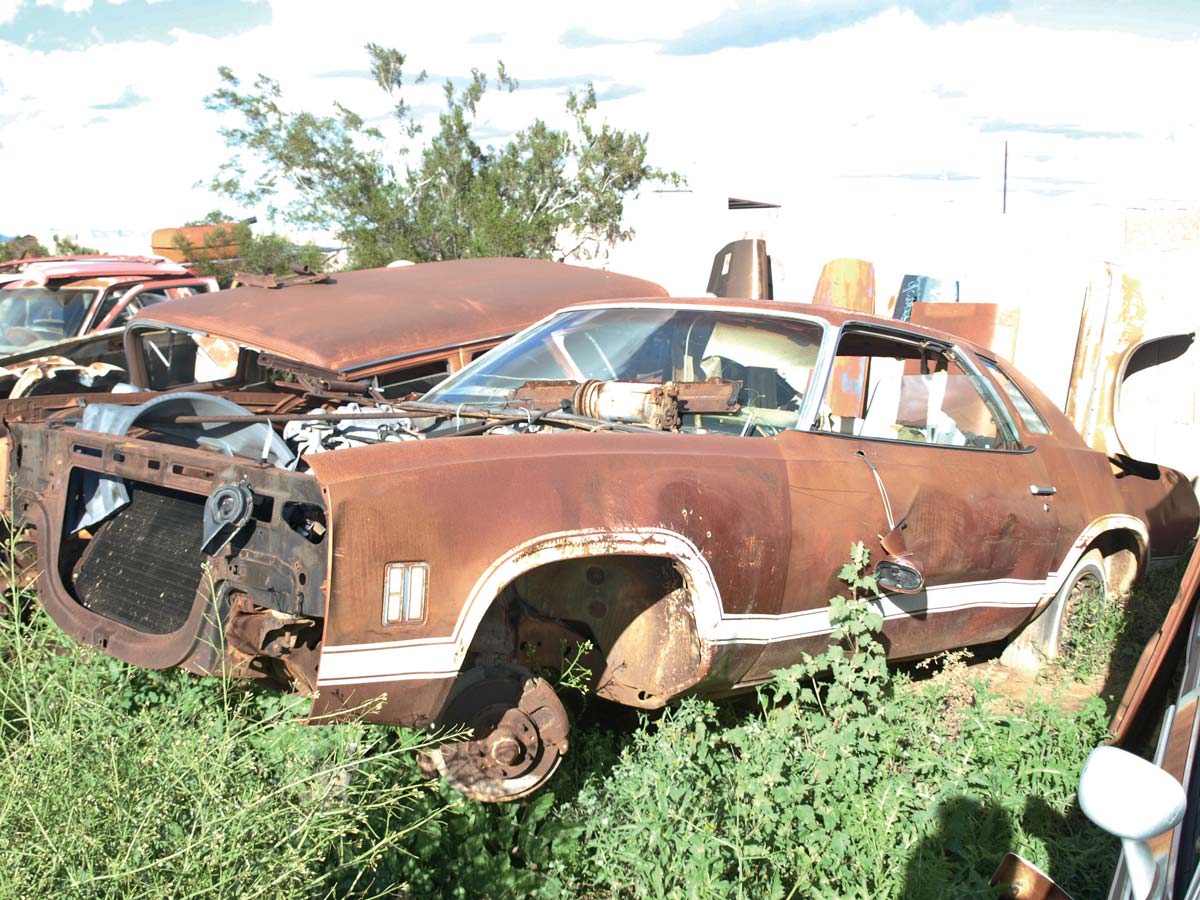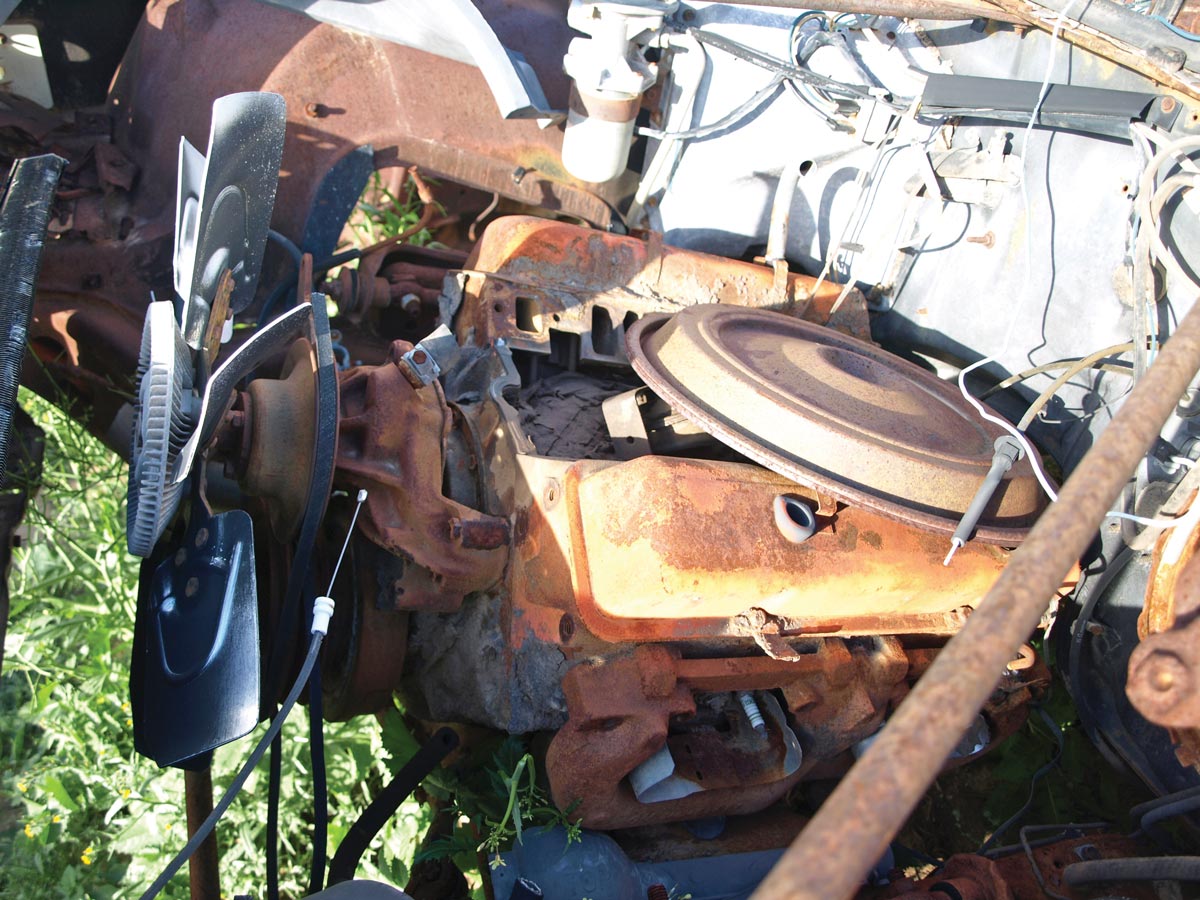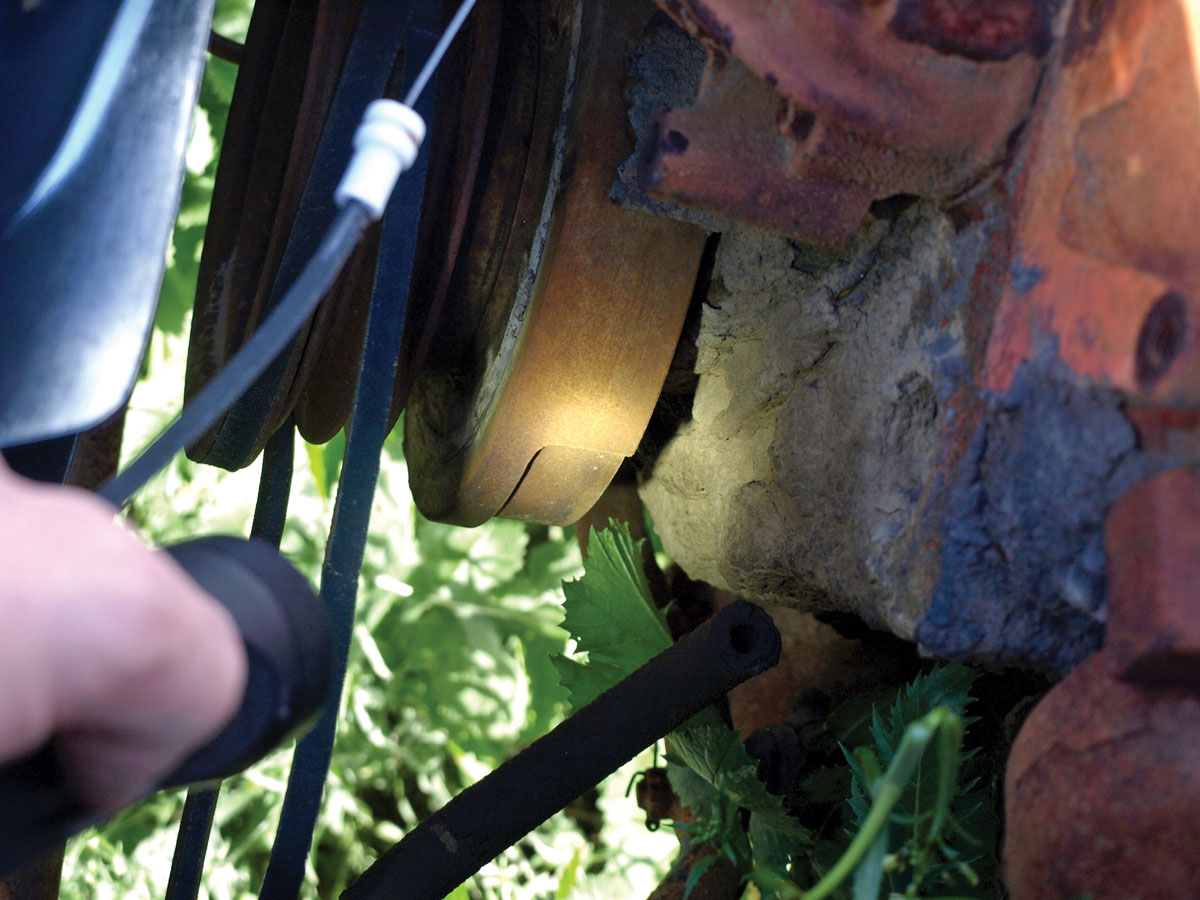 BOWTIE BONEYARD
BOWTIE BONEYARD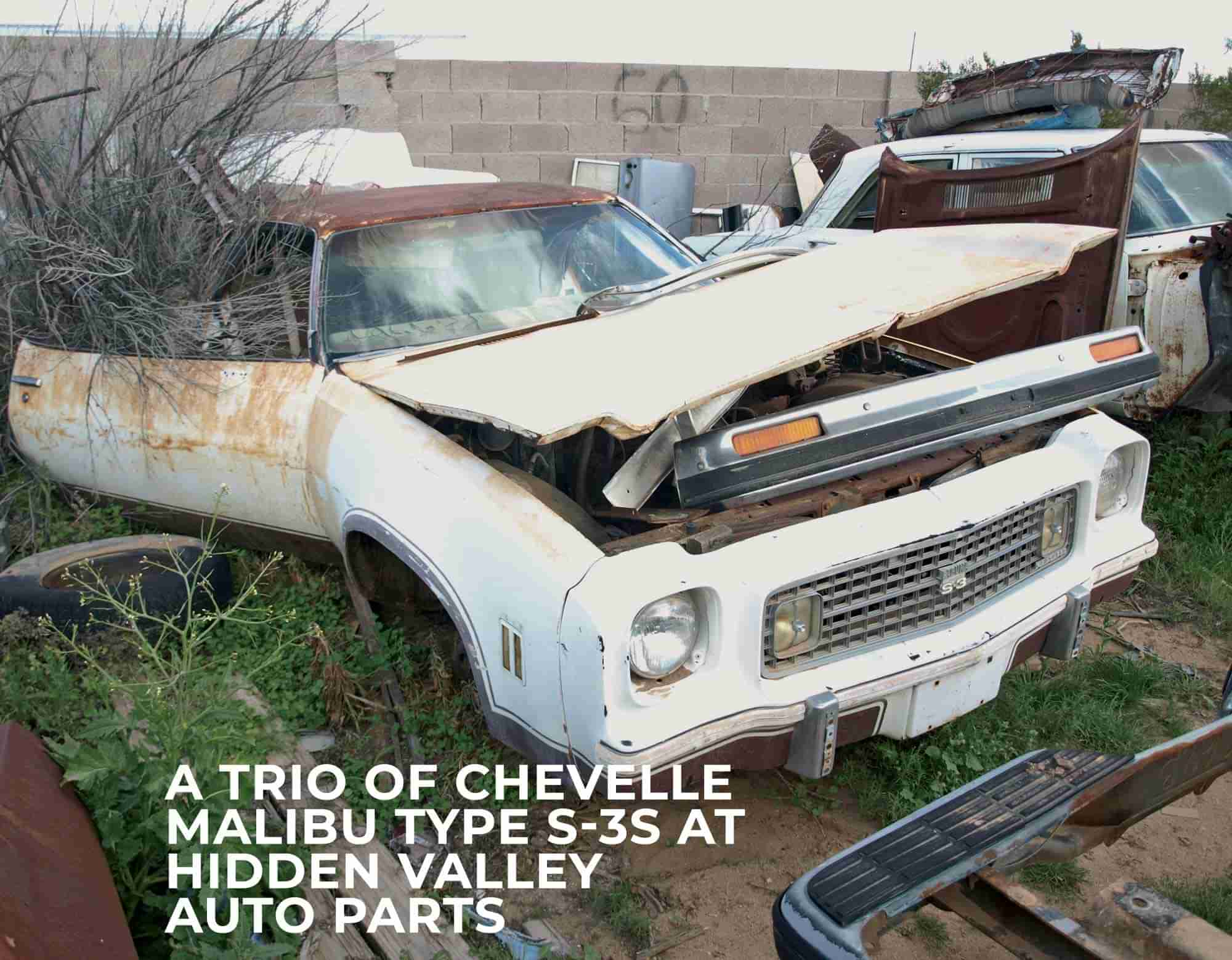
 Photography BY THE AUTHOR
Photography BY THE AUTHORhen they first appeared with their squared-off lines and chunky energy-absorbing bumpers, the 1973 Chevelle line was a radical departure from the more rounded 1968-1972s. Built to appease federal safety zealots, GM designed the all-new midsize A-body platform with an eye toward accident protection. As such, all roof pillars grew in thickness, fabric-topped convertibles were eliminated, and hydraulic rams allowed the aforementioned energy-absorbing bumpers to slowly return to pre-impact condition within 24 hours (as long as the impact was 5 mph or less).
At the top in 1973 was the so-called Laguna, which showcased GM’s growing interest in molded urethane endcaps for the front end of the body. While lesser Deluxe and Malibu models got massive chrome front bumpers and somewhat conventional metal grille openings, the Laguna (which was offered on all body styles, including station wagons in 1973) came with one-piece, body-colored fascias that integrated the bumper and shrunk the grille into a pouting orifice containing the turn signals. The effect was slick and looked like it was pulled from a mold—which it was.
While the SS option (RPO Z15, $242.75) could be had one last time in 1973 (including station wagons!) with any V-8 engine, 1974 brought something familiar, yet new—the Laguna Type S-3. Offered only on two-door Laguna coupes, the Type S-3’s metal identification emblems used fonts and colors that emulated the classic SS badges of previous years. In fact, from a distance, the S-3 and SS emblems look nearly identical. Chevrolet never revealed what exactly “Type S-3” meant, but no doubt took inspiration from Jaguar’s “E-Type” nomenclature to capture a European flair.
In this story, let’s examine a trio of sadly abandoned Laguna Type S-3s discovered in Maricopa, Arizona, at Hidden Valley Auto Parts (602-252-2122).
